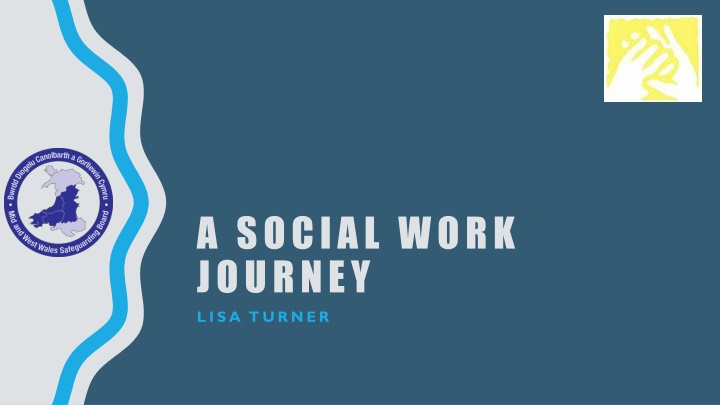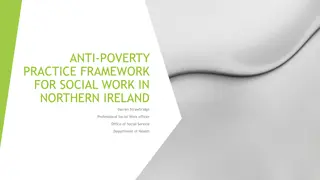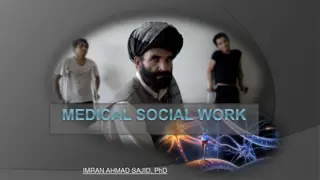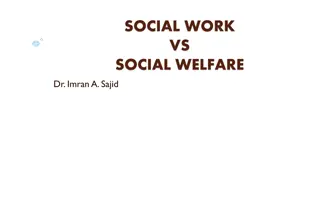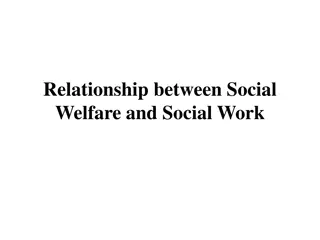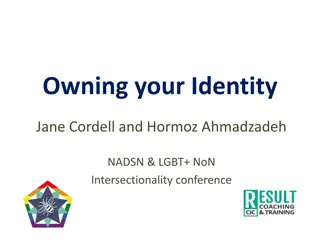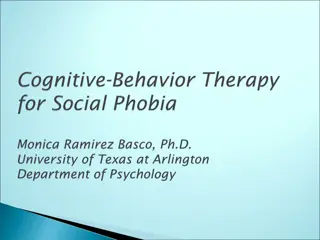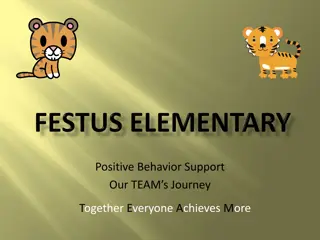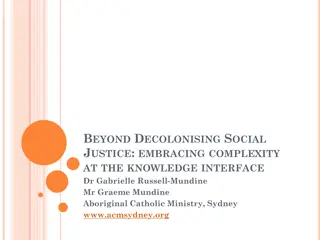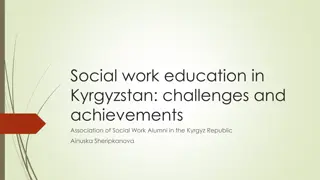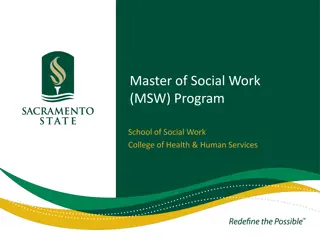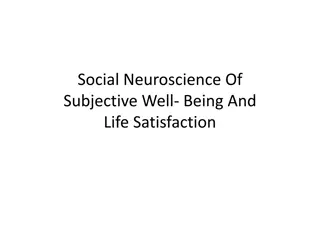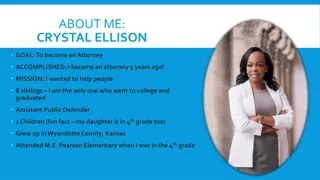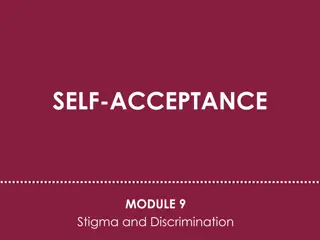A Social Work Journey: Overcoming Challenges and Embracing Success
Lisa Turner shares her journey in social work, overcoming worries and finding success. From lacking focus to embracing the Signs of Safety model, she shows growth in supporting families and empowering them to find solutions. Through case examples, she highlights progress in creating safer environments for children.
Download Presentation

Please find below an Image/Link to download the presentation.
The content on the website is provided AS IS for your information and personal use only. It may not be sold, licensed, or shared on other websites without obtaining consent from the author.If you encounter any issues during the download, it is possible that the publisher has removed the file from their server.
You are allowed to download the files provided on this website for personal or commercial use, subject to the condition that they are used lawfully. All files are the property of their respective owners.
The content on the website is provided AS IS for your information and personal use only. It may not be sold, licensed, or shared on other websites without obtaining consent from the author.
E N D
Presentation Transcript
A SOCIAL WORK JOURNEY LISA TURNER
WHAT I WAS WORRIED ABOUT I was at the point of giving up Social work I was in a generic social work team and lacked focus on children s social work and didn t feel like I could get good at one thing. My own confidence .leading a family discussion with a questioning approach. Not having professionals around the table to lean on to help talk about the family situation. That I was going to providing the answers rather than supporting the family to find their own solutions. Logistically how you get people sitting together in a rural community at the right time for the YP/child. Dealing with conflict. Everyone walking out! I always forgot some elements either the scaling/bottom line/separating strengths from safety. Everyone looking at me and thinking I was going to make things better. Worrying that everyone attending was going to think they had wasted their time.
WHAT WAS WORKING WELL Powys decided to embrace the Signs of Safety Model. The more faith and understanding I was developing within my practice, the more confidence I felt. Persistence does pay off where parents worry about the honesty of the concern within their network, where this is explained fully and clearly, they do get it and take it on board. I began to look forward to having a family network meeting. I knew it was ok if I didn t get things right. Family feedback has consistently been positive from the first network meeting. As a social worker I feel that I am supporting families, working with them and enabling. Risk is not disregarded but instead of talking about the worry, we are doing something to practically support and protect. If professionals attended at the family s request, they had little input watching this in practice was interesting! E.g. housing could see the family wanted and were trying to make changes.
HERE ARE MY 3 CASE EXAMPLES TO SHOW MY JOURNEY
ONE OF MY FIRST FAMILY NETWORK MEETINGS Police found cannabis in the family home where there were two young children and housing were going to evict. We held a FNM where housing also attended. Parents were then able to use this to demonstrate to the courts that they were working with the Local Authority. Parents struggled with the honesty of the model but separating the harm from the complicating factors solved this resistance. Forgot to record most the information and didn t even do Scaling and bottom Lines.
IN THE PAST, I WOULDVE Used a lot of words and discussion to explain why I was worried. The family would ve felt judged and talked at. Told the family what me and my manager thought about the worry and what we thought needed to happen to keep their child safe. Looked to services for the solution rather than within family and parents themselves. Instead, Parents had to own what was happening in their family and we created an environment so that parents could no longer think what was happening was ok. Once we did this, the children were able to live in a safer home environment with the safety plan we developed from the family network meeting.
SECOND EXAMPLE - FAMILY NETWORK MEETING USING WORDS AND PICTURES WITH FAMILY, INCLUDED ALL CHILDREN IN HOME. Who is worried about T and why Mum, Lisa (social worker), S, K, C, P, B, Police, Mrs Jones (School) are worried because T talks to people older than her online, in particular M. CSE risk for a Young Person. Undertook two visits with the family members, including younger siblings to create plan around T. This has happened in the past with J's friend, X. Mum's biggest worry is an older person getting T to do something that makes her feel uncomfortable. T might do something that means many people see photos of T naked. Mum worries T has multiple social media accounts. Lisa's biggest worry is that T could be encouraged to meet older men when she is told by friends it is ok. If this happened T could be told to do sexual things that harm her when she feels she cannot say no. = Without a safety plan, Lisa and Mum know T is not safe to use phones/ipads. T needs a phone, it makes her feel safe. If mum feels the safety plan doesn t keep T safe or T doesn t work within the plan mum must take both ipads and phones from T and report worries to the police.
WHAT WAS DIFFERENT ABOUT THIS ONE? From the start I knew the family had to be main people to support this young person. Having the confidence to work within the family rather than start referring for support instantly. All siblings attended this would not have been something I would ve done previously. Parents identified a clear bottom line and consequence. We had to use this when the safety plan was not effective on one occasion. The family were already focused on the strengths of this young person there was no time spent in trying to focus the family away from the worries and complicating factors. I used Scaling persistently; all visits and all family network meetings. Family were already familiar with the language and model.
THIRD EXAMPLE: SECTION 47 CONCERN ABOUT A CHILD BEING HARMED AT HOME WHO WAS STAYING WITH A FAMILY FRIEND DURING THE INVESTIGATION. This child withdrew part of her allegation however we still worked with the worry and within the network because of the harm being alleged. An urgent family network meeting took place at the family home so that a safety plan could be developed. Five family members turned up and we were able to talk about the harm and the complicating factors affecting this child. Family feedback was fantastic they felt that there was so much working well and could see it visually. Lots of high hopes.
WHAT NEEDS TO HAPPEN I need to stay in Social work! I have more days where I think I am helping than adding to the worries for families. I need to keep doing the training so I don t get stuck, lose motivation or knowledge. More mentoring of our support workers, being brave to give it a go. Even where support staff haven t had the 5 day training, supporting them to come alongside the process of a family network meeting to learn within the county. Using the language in our every day work. Risk Sensible/Family responsibility/strength based questions. Families need to be able to predict how a social worker will support them. One day I will get the scaling ends right .there is hope for me yet!
